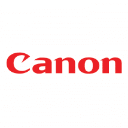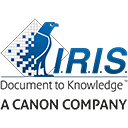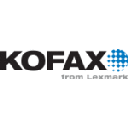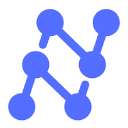5 steps to successful data digitisation + tools to simplify your life
What is data digitisation? This is the first process in your company's digital transformation. Your company uses digitisation software to extract and capture data, then sends it automatically to your business applications for direct use. This data is also classified and filed according to your own rules in an EDM (electronic document management) solution for structured archiving of your files.
The main benefit: improved information processing and real-time access via a digital copy of your documents. The main challenge: staying in the race in an increasingly digital market, where everything is speeding up. To improve the quality of public services in France, the government itself is digitising them.
Appvizer gives you the basics you need to understand electronic data capture:
Understanding data digitisation
What is document digitisation? While private individuals can scan a document or an image and reuse it as it is, it is in the interests of professionals to consider document scanning from a data perspective. Here are some explanations.
Document scanning: definition
Digitising a document using specialised software refers to :
- the action of copying and converting an entire document from paper format to digitised file format, known as digital, which can be used on a computer or on the Internet;
- the act of capturing data from a document, whether in paper or digital format, extracting it according to its own rules and sending it to third-party applications on the Internet or on the user's computer so that it can be used;
- the action of recognising and classifying digitised documents according to its own storage criteria in an online document database for preservation and legal archiving.
📌 Note: most of the time, digitised information is text and images. In some sectors, digitised data can be sound, audio, or video, moving images with an audio track.
The diagram below explains how document digitisation works and how the data is used:
Dematerialisation: definition
Dematerialisation refers to the digitalisation of processes and working methods within a company. In other words, employees no longer handle (or handle less and less) paper and instead use software and the internet to process data more efficiently.
Here are some concrete examples of successful dematerialisation in companies:
- employees use digital documents from which they can extract part of the data to carry out a specific task ;
- a content management system centralises all the company's digital documents in an orderly fashion, so that each business area can easily find the documents it needs;
- each business expert uses the documents or part of the data by importing the information into software to perform his or her tasks;
- the processing and use of information and documents is streamlined;
- employees improve their workflows, save time and are more efficient;
- The company as a whole sees its productivity increase;
- the company also saves physical storage space, formerly dedicated to archiving paper documents.
Data capture and extraction at the heart of digitisation
Digitising documents enables processes to be dematerialised and information processing to be accelerated. The relationship with data is completely changing the established order: data is captured, extracted, sent to the software of its choice and used in real time.
The digitisation of documents and the capture of data enable dematerialisation, but they are not the only components.
Automated digitisation now makes it possible to :
- restore the quality of the data identically, eliminating errors caused by manual input,
- exploit data like never before and improve internal and external exchanges.
The 5 stages of document scanning
To explain the 5 stages of document scanning, let's take the example of the IRISPowerscanTM 10 scanning and data capture software in the following video:
Let's look at the 5 stages of document scanning in detail:
Stage 1: Scanning documents and importing data
The software scans and imports documents from all kinds of sources: paper format, import from documents stored in the Cloud, from email, from different scanners or even multifunction devices.
The solution recognises and processes all file types (JPEG, TIFF, DOC, PDF, PNG, BMP, etc.) and all document types (invoices, ID cards, driving licences, orders, delivery notes, contracts, etc.).
Stage 2: pre-processing and classification
The solution makes the document more legible thanks to more than 20 image enhancement techniques (deparasitisation, removal of black edges, autorotation, etc.).
It then automatically classifies the document according to your own rules and criteria, using integrated technologies such as character recognition, barcode recognition, OCR zone recognition, etc. ....
The software also uses automatic recognition of standard documents (ARD) to classify CVs, passports, invoices, delivery notes, etc.
Step 3: Intelligent data indexing
The tool recognises search fields and zones, data type and regular expressions such as a company name, invoice number, IBAN number, SIRET number or logo.
It detects the data to be indexed and extracted.
Stage 4: checking and managing ambiguities
The software automatically checks for matches and detects anomalies by requesting that they be verified.
If an error is detected, the manager can be immediately alerted by email so that he or she can rectify the error either later or immediately.
Step 5: Export to business applications
The scanning and data extraction software allows you to export the document in the format of your choice (PDF, hyper-compressed PDF, TIFF, JPG, DOCX, XLSX, ....) and send it to your archiving or document management solution (Google Drive, Therefore, Dropbox, Dokmee, SharePoint, etc.).
The relevant data from a supplier invoice, for example, can also be sent automatically to accounting or ERP software to automate or pre-post entries, or to other business software for further processing.
Our top 7 scanning software solutions to help you
Comparison table
| Software | Type of user | Key benefit | 3 key features | Entry price |
|---|---|---|---|---|
| Adobe Scan | Home users, small teams | Simple mobile scanner with OCR and AI | - Document capture via smartphone - Automatic edge detection - OCR and PDF/JPEG export |
Free |
| CaptureOnTouch Pro | SMEs, administrative departments | Pro scanner integration and efficient document workflow | - Batch scanning (double-sided) - Multilingual OCR - File separation (barcodes, etc.) |
On quotation |
| IRISPowerscan™ 10 | Large accounts, high-volume processes | High-speed capture and ECM integration | - Multi-source capture (scanner, cloud) - Automatic indexing and sorting - Export to ECM/workflows |
On quotation |
| Klippa DocHorizon | VSE/SME, light digitisation | AI-based intelligent capture | - Data extraction - Advanced OCR - API for integration |
On quotation |
| Kofax Capture | Business, regulated sectors | Complete automation of the document process | - OCR + barcode recognition - Automatic classification - Workflow + ECM export |
On quotation |
| Nanonets | Startups, SaaS development | AI for extraction of custom fields | - OCR + ML - Custom templates - API/data export |
Free offer |
| Xelians Archives Management | Administrations, archives | Secure archiving for sensitive data | - Indexing - Lifecycle management - RGPD compliance |
On quotation |
Adobe Scan
Still juggling paper files? Go digital effortlessly. Adobe Scan turns your smartphone into an ultra-reactive mini-scanner . The application detects the edges, straightens the image and then triggers lightning OCR. Coffee stains evaporate thanks to Magic Eraser. The result: a clean document, ready for electronic management.
- IA Assistant: ask your questions and get instant answers;
- Multilingual OCR to extract every piece of digital data;
- high-speed multi-page scanning, automatic triggering;
- PDF or JPEG export to Adobe Document Cloud;
- Magic Eraser to clean up scratches and thumbnails.
Perfect for speeding up your document process and adding value to every file.
CaptureOnTouch Pro
Looking to scan stacks of documents without the headache? CaptureOnTouch Pro, supplied with Canon imageFORMULA scanners, offers a simple and clear icon-based interface. One click and your files go from paper to digital format, thanks to its unrivalled features:
- Multilingual OCR + barcode: creates editable and searchable files;
- batch separation: white pages, barcodes or zonal OCR for automatic filing;
- flexible output: PDF, TIFF, JPEG, PNG, PPTX, to cloud, email or ECM;
- automatic naming: add doc ID, recognised text or date to stay organised;
- command-line integration: automate your workflows like a pro.
CaptureOnTouch Pro streamlines your capture process and boosts day-to-day document management.

CaptureOnTouch Pro
IRISPowerscan™
Do you manage XXL volumes of documents? IRISPowerscan automates capture, sorting and indexing. This client-server solution processes up to thousands of pages a day, without breaking a sweat, thanks to its many features:
- multi-channel: scan, monitored folder, MFP or cloud to centralise information ;
- automatic classification: barcodes, OCR/ICR and layout recognition;
- premium OCR: over 130 languages, PDF/A compression, one-click validation;
- direct export: DMS/ECM, ODBC, CMIS, SharePoint, SAP connectors;
- flexible interface: browser or designer mode, granular user rights.
IRISPowerscan adds value to each file, secures archiving and reduces data entry errors. The company moves up a gear, without paperwork or headaches.

IRISPowerscan
Klippa DocHorizon
Do you have a heavy information scanning process? Klippa DocHorizon automates everything. This Intelligent Document Processing (IDP) cloud platform uses OCR and AI to capture, classify, extract and verify your data in a flash:
- multi-source capture: scanner, monitored files, MFP, email or cloud (Box, SharePoint, etc.). Centralise information efficiently;
- AI extraction and classification: OCR, ML, barcodes and layout recognition. Supports over 50 document types;
- verification and anonymisation: fraud detection, masking of sensitive data for RGPD compliance. Accuracy up to 99%;
- Various output formats: JSON, XML, CSV, XLSX, UBL, PDF, TXT, API or ERP/ECM hub;
- easy integration via API and SDK (iOS/Android/Web). Set up in less than a day.
Klippa DocHorizon turns your digital data into a real business lever. Saving time, reducing errors, ensuring compliance and rapid deployment: enough to boost your digital project with confidence ⚡.
Kofax Capture
Do you process massive volumes of documents? Kofax Capture (also known as Tungsten Capture) centralises all your paper and electronic flows. It captures files from scanners, emails, faxes, MFPs, network folders or web services.
- high-speed batch processing: mass scanning, image cleaning (VRS), multilingual OCR, checkbox and barcode recognition;
- automatic classification and indexing: via OCR, ICR, barcodes and predefined zone templates;
- export to ERP, ECM: over 140 connectors (SharePoint, SAP, Oracle, etc.), ODBC export, PDF/A, DMS, Cloud ;
- scalable architecture: suitable for departments and large companies alike, deployable on local network or cloud, modular installation;
- analysis and management: integrated dashboard, real-time reports, identification of bottlenecks and continuous optimisation.
Kofax Capture accelerates your document process, improves data quality and secures every file. You gain management, compliance and performance on a massive scale.

Kofax Capture
Nanonets
Tired of manually entering data from invoices, receipts or order forms? Nanonets uses AI and OCR to transform your paper or digital documents into usable structured information. The result? Up to 90% automation and impressive time savings.
- Customised templates: train your own workflows to recognise your business fields;
- Advanced OCR + ML: precise extraction of text, tables, boxes, barcodes and signatures;
- API: connect easily to CRM, ERP, cloud or databases;
- fluid interface: intuitive UI, instant feedback, quick start-up;
- responsive support: customised onboarding, attentive team and comprehensive documentation.
Whether you're scanning a receipt or a daily workflow, Nanonets gives you effortless access to your digital data.

Nanonets
Xelians Archives Management
Do you need to archive sensitive documents for 30 to 120 years? Xelians Archives Management guarantees security, integrity and compliance. This hybrid platform manages both physical and digital archives, in a certified environment.
- multi-purpose: import via forms, monitored folders or the cloud, for a fluid document chain;
- VITAM core: based on this open source standard, the tool guarantees the probative durability of documents;
- hybridity: paper and digital archives coexist, with centralised management;
- Data Hub: converts data flows, automates transfers and facilitates integration into your systems;
- NF Z42-013-certified archiving: migration, time-stamping and guaranteed long-term access.
X-AM secures your information assets, improves RGPD compliance and structures your archiving process. Perfect for demanding businesses and public authorities.

Xelians Archives Management
The benefits of digital data: the full picture
The first advantage of digital data for businesses is the dematerialisation of invoices:
- You avoid having to manually encode each invoice: the process is automated. The scanning software recognises and extracts the relevant information itself.
- So you can record each invoice in the accounts as soon as the data has been captured. The information is used to enrich the accounting entries according to the rules you have established.
- You then export the invoice in PDF format, for example, for archiving, a format enriched with metadata that will enable you to find the document if you need to.
- This saves you 50% in processing costs and gives you more time to devote to your management.
Here's an example of invoice scanning in Kofax Capture (mobile version) in the image below: the data is recognised and extracted automatically.
The table below details the various benefits of digital data depending on your sector of activity:
| Benefits | Type of business and sector |
|---|---|
|
|
|
|
|
|
|
|
|
|
|
|
|
|
|
|
|
|
Conclusion: 5 reasons to use scanning software
There are 5 main reasons why companies use scanning software:
- They automate their administrative tasks and save time.
- They avoid errors caused by manual data entry.
- They can continue working while the solution is running in the background (depending on the software).
- They can use the data in their business applications.
- They can easily archive and retrieve their documents.